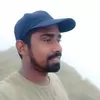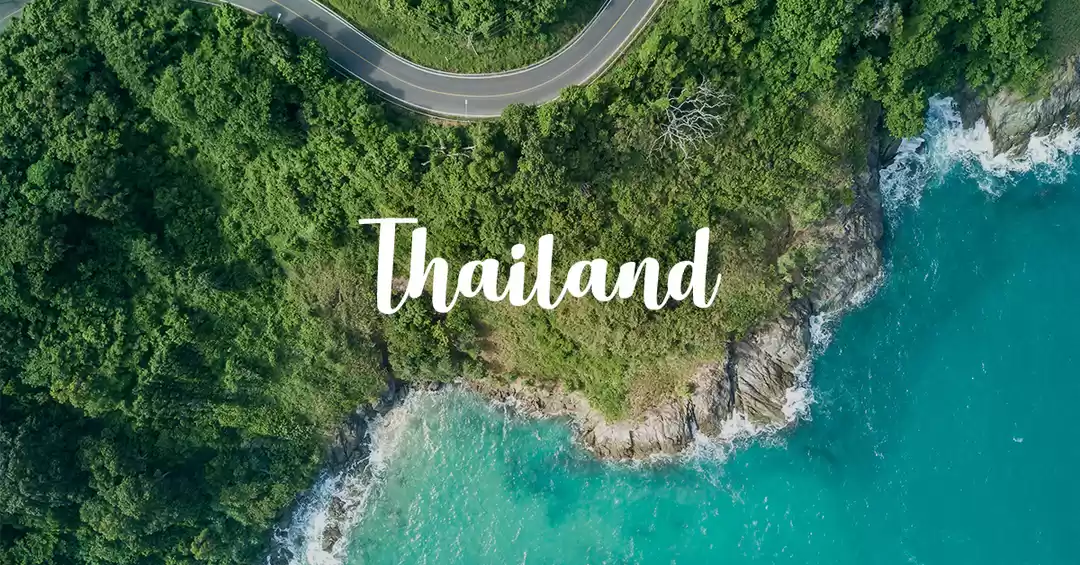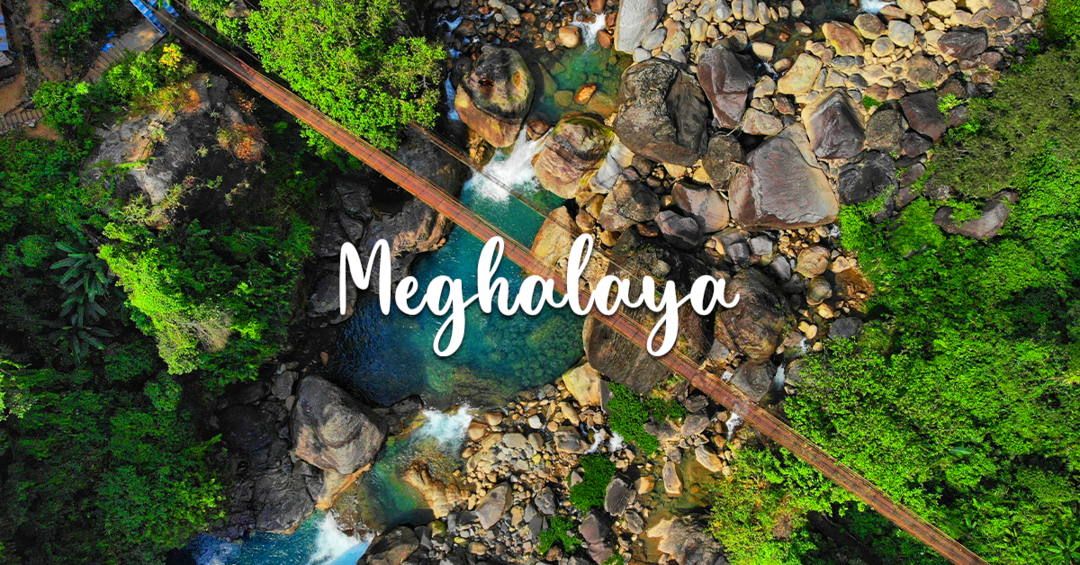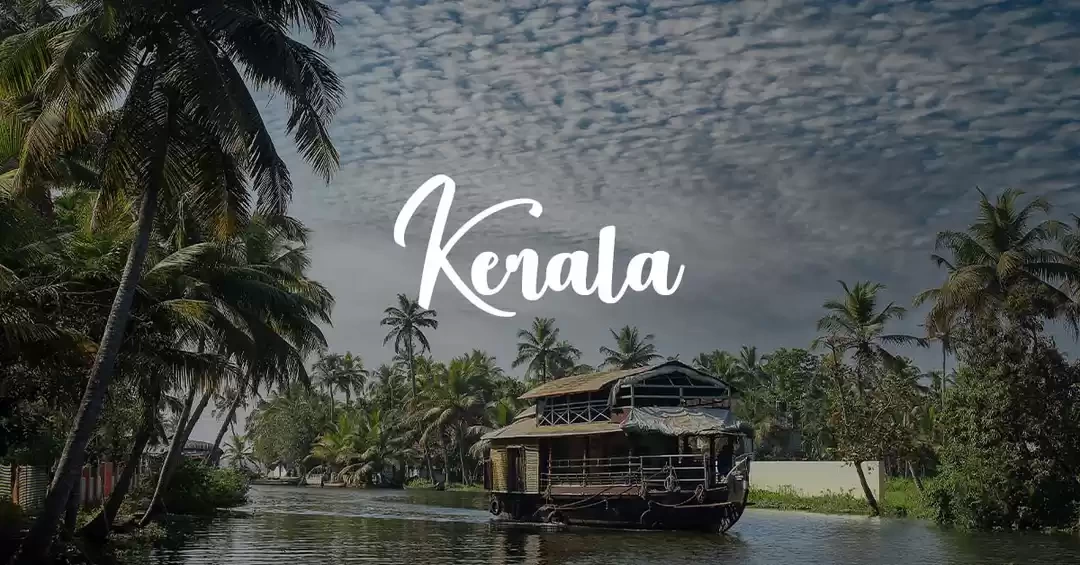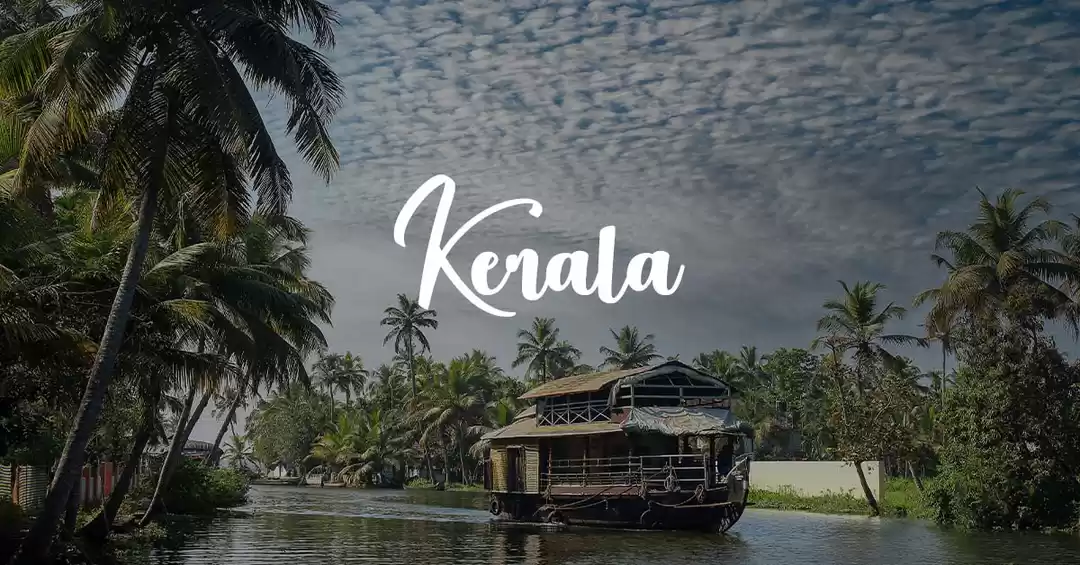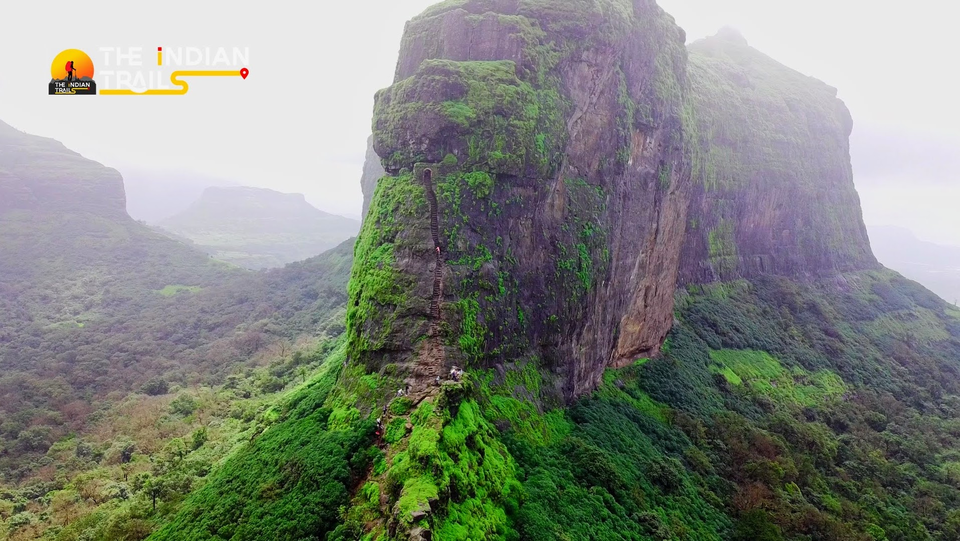
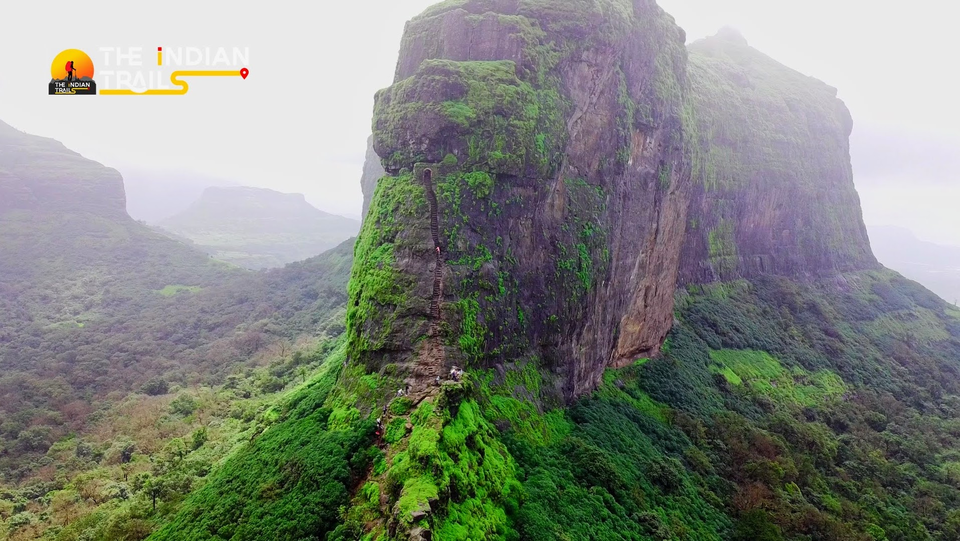
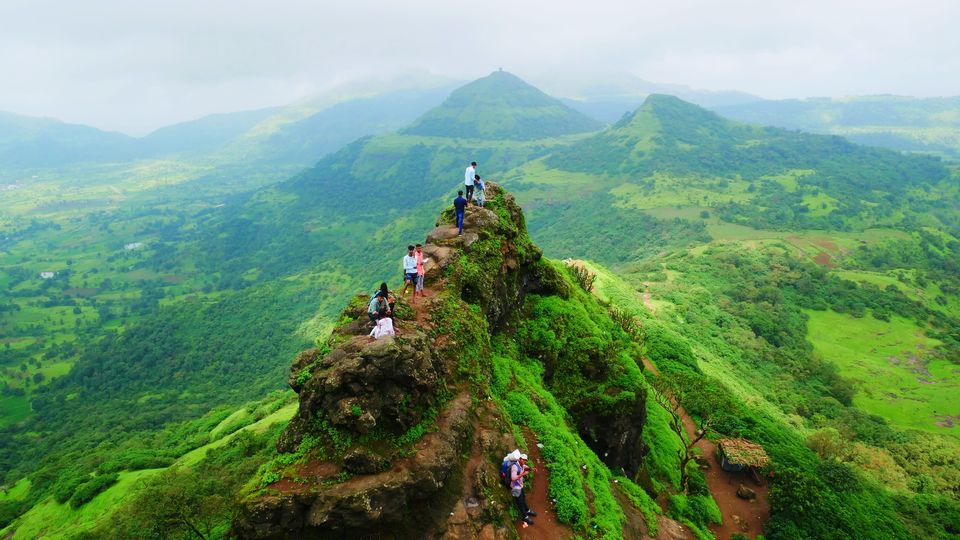
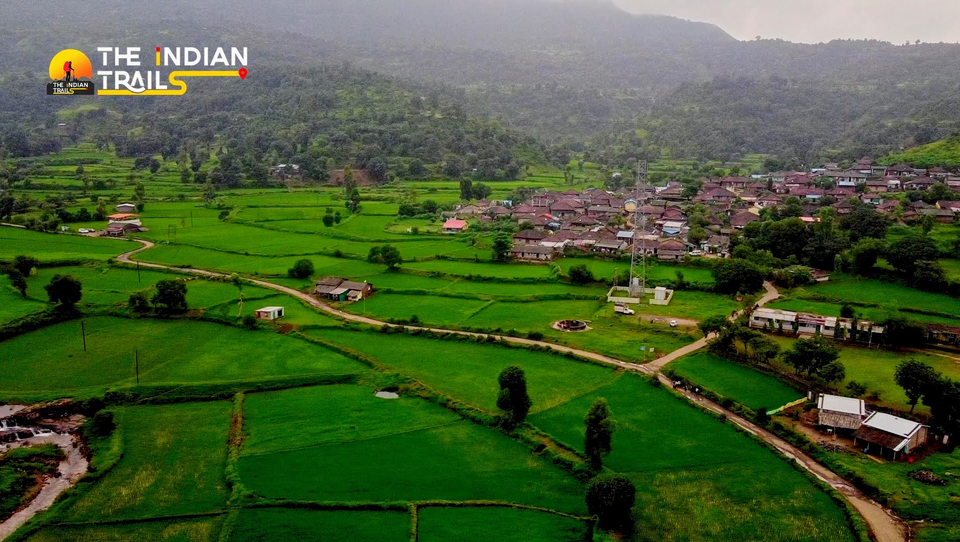
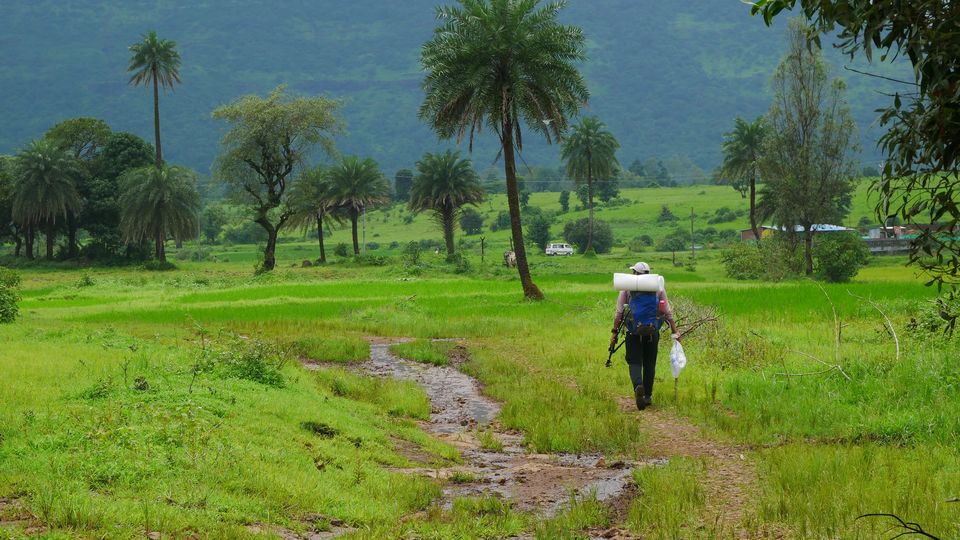
Landscapes of Maharashtra are breathtakingly beautiful during Monsoons. The hills would be dry most time of the year and lush green during monsoons. This is the second day of our trekking through these mountain ranges, which are rich in waterfalls, plain meadows and flowering valleys. We started from Nashik yesterday morning, reached Harihar Fort by evening and camped on top of the Fort. Today, we will descend the Harihar Fort and move to the base village of Kalsubai which is the tallest peak in Maharashtra.
Now, It is misty in Harihar Fort. It was raining heavily here last night. As the rain stopped, the temperature started to lower. Outside the tent, the whole area is covered in thick mist. We can’t see anything beyond a few meters.
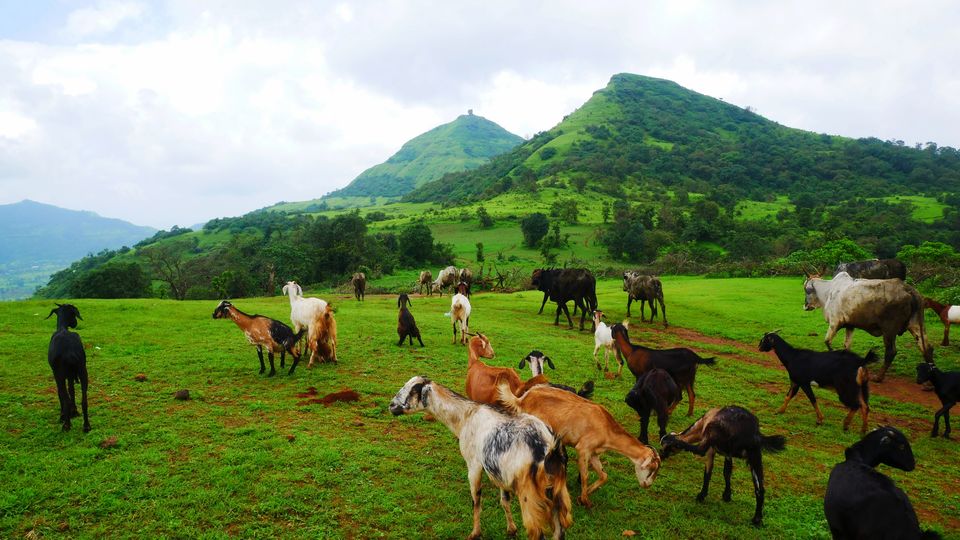
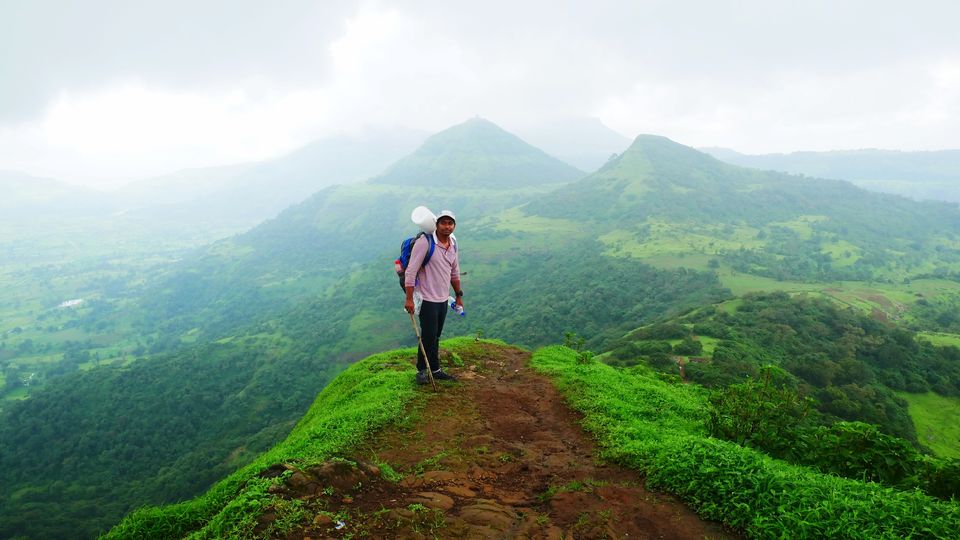
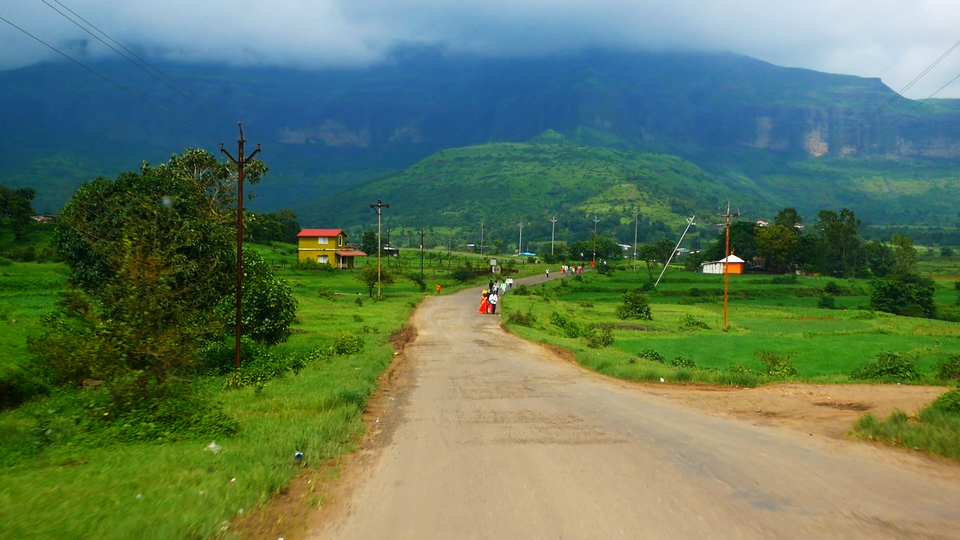
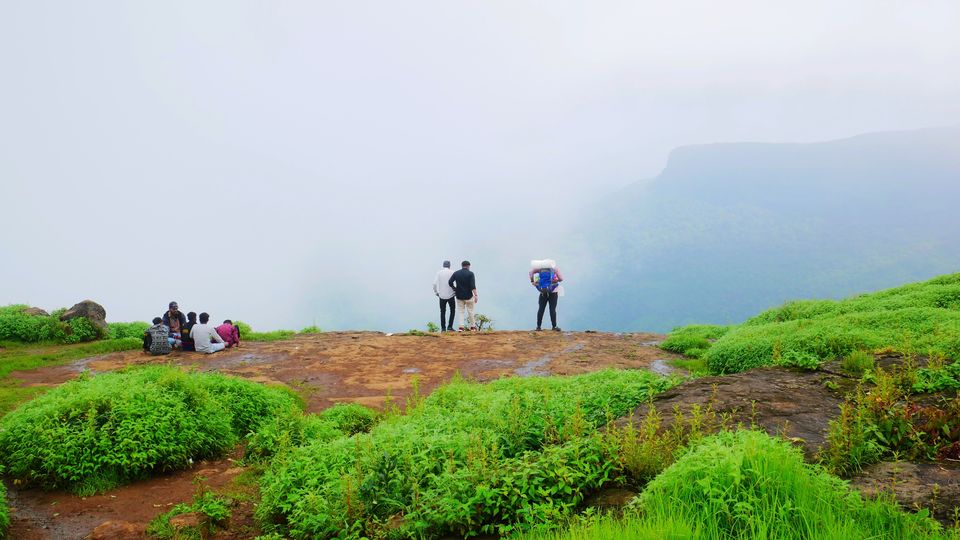
Though it has been a long while since the sun has risen, it is only now that the sun rays started to warm the top of the fort. We are getting ready to descend the Fort. Without taking long, we started to roll back our tent. From here, we have to walk over top of the fort to reach the other side, then descend the rocky pinnacle, and then a 4KM trekking to Nirgudpada. From Nirgudpada, we have to reach Trimbak in a shared jeep, then to Ghoti by bus, and then to Bari village which is the base of Kalsubai Peak. This is the plan for the day. Even though the distance to cover today is short, lack of public transport through these routes is a big concern.
Now, we are on the way to the other side of the Fort. Who wouldn’t wish to take a walk on a misty mountain top in the early morning, in the company of enchanting coolness and light breeze? No matter how far you walk like this, you won’t get tired.
It's a weekend and many trekkers have reached the fort in the morning itself. After some time, it may be crowded. Then we have to line up for hours to get a chance to climb down the rocky pinnacle in the fort. The same will be the condition at Kalsubai Peak as well, where we are going tomorrow. During the monsoon, many people from various states visit this peak to experience the adventure. This is helpful for the villagers. The villagers arrange food and shelter for trekkers on demand. And they also make a small income from this. We are also waiting for a group to climb the pinnacle by enjoying the distant view of Hareswar village in the valley.

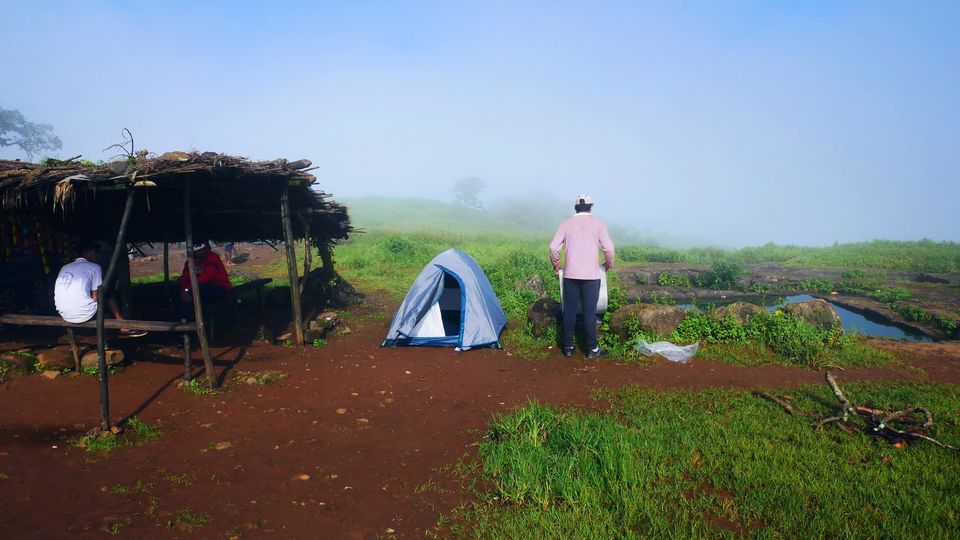
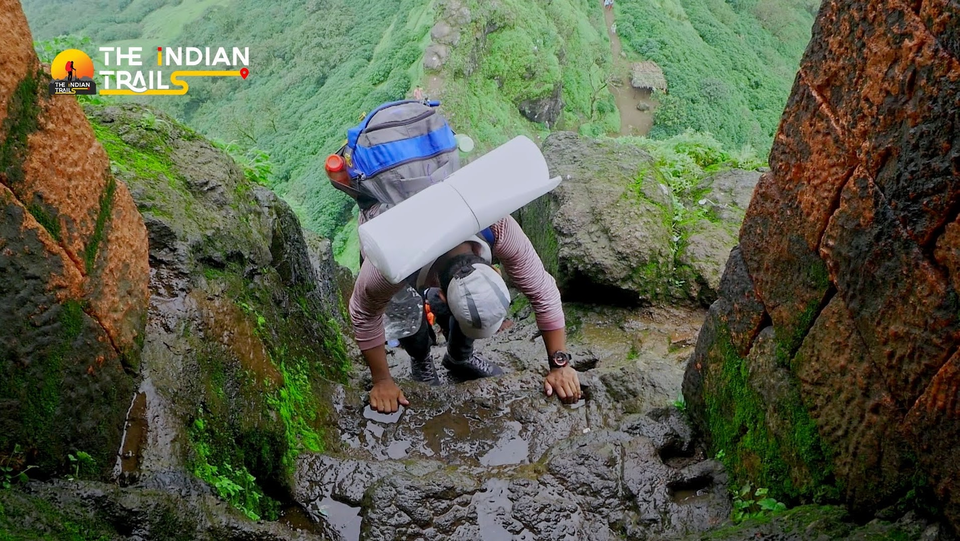
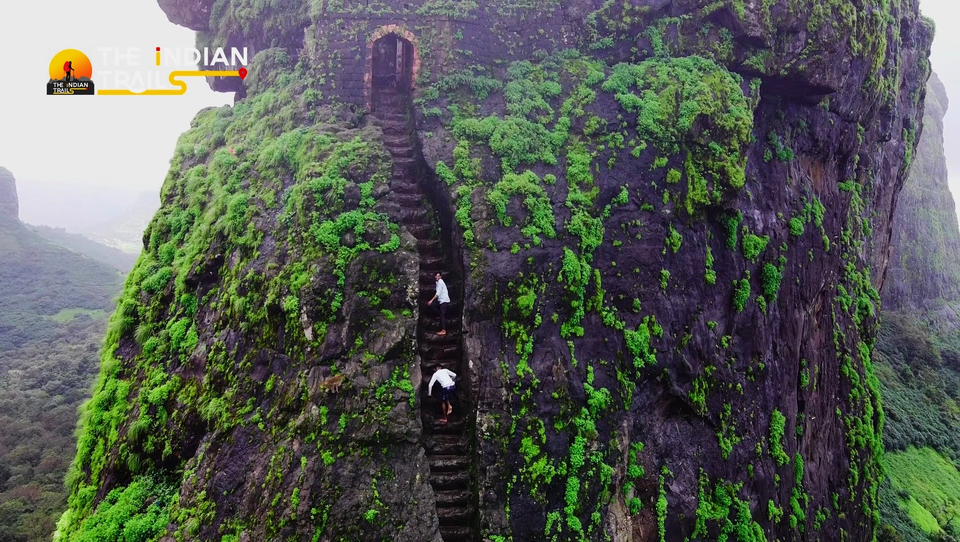
Even Though the sun has risen, the nearby peak is still covered in thick mist. When it rains, we can see many waterfalls on this hill. And When the rain stops, the waterfall disappears. Now we are getting down from the Fort.
While descending the fort, the first part is not challenging. However, the steps are narrow here. Also, there are no holes here where we can hold on to it. In some places the steps are steepy. The stairs are wet and slippery. So it will be more difficult to descend the fort than climbing it. To reach the bottom, we have to get down through these wet steps curved on the rock. Each step has a different shape. Their height also varies. While ascending the pinnacle through these steps, we can see the next step to make a move.
But while descending, we can't see the steps below us. So we have to stretch our legs down and take the next step. Some of our fellow trekkers were wondering if it was a bad decision to climb this pinnacle. The biggest mistake is to do treks on running shoes.
At some part, steps are carved by keeping a handrail on the edge. So we can move here comfortably. The next group is climbing the pinnacle now. We are waiting for them to reach the top by enjoying the astonishing view of nearby hills and valleys.
After waiting at the gate for a while, we got a chance to get down. This is the most dangerous part during the descent. You can hold on to small holes in the rock. My bag is slipping over the rock. So I am very careful while making each step here.
Finally, we have reached the bottom of this rocky pinnacle. The dangerous parts are over. After descending from the top of it, sitting here gives you a special feeling. The feeling of overcoming the fears and challenges during treks like this and finally standing at the bottom of it. We are really enjoying the moment. Once again, I have conquered the Harihar Fort.
There is a small rock patch at the bottom of this pinnacle. All those who are afraid to climb the pinnacle have already sat here waiting for their companions to get down. This rock patch also offers an astonishing view of the surrounding valleys. The mist has moved away from the valley.
We can see Nirgudpada village from here. Beyond that, the parts of Vaitarna Dam in the distance. The whole surrounding is full of lush green hills and valleys.
Now we are bidding goodbye to Harihar Fort. We don’t feel like going back home. The view from the top of the Fort is stunning. With no rain today, the valley is breathtaking. Beautiful Nirgudpada village on our left side and Hareswarvadi village on the other side. Those who come here in their own vehicles and private taxis reach the fort from Hareshwar Wadi. We can see a lot of vehicles in the village now. Those who come by shared jeeps start climbing this hill from Nirgud Pada. We are now returning to Nirgudpada only. From there, we have to get a shared jeep or hitchhike to Trimbak, and then to Bari village by evening.
After the descending the hill, washing the face in these streams is really refreshing. Water flowing in the stream is less today as there is no rain today. Now we are heading to Nirgudpada which is around 1.5 km away from here. The initial part of the way is through the bushes. After that, the pathway is surrounded by green paddy fields. Here, paddy is cultivated in small small plots. After the monsoon, all these places will be quickly dried up. Then they wait for the next monsoon.
We are getting closer to the village. Houses can be seen in the distance. The palm trees on this ridge make this landscape beautiful. A beautiful village like a picture drawn on a canvas.
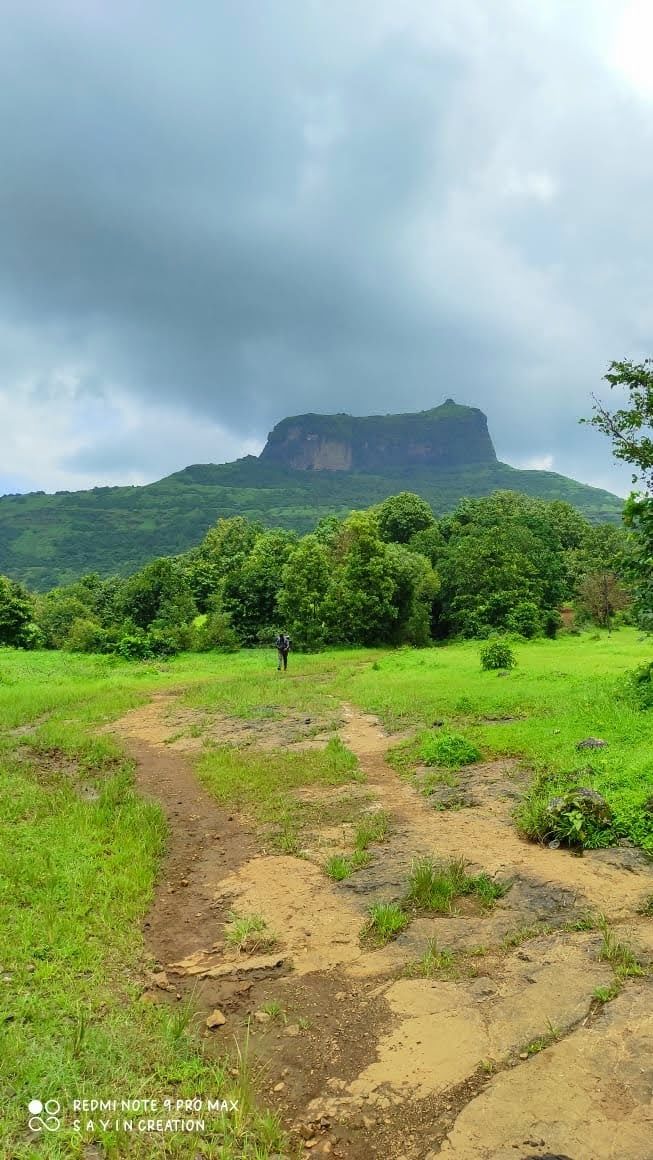
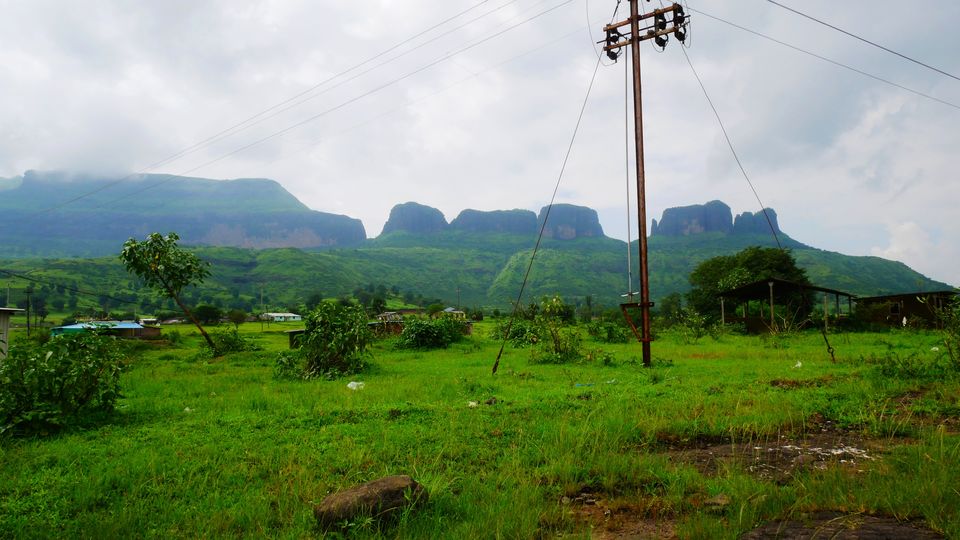
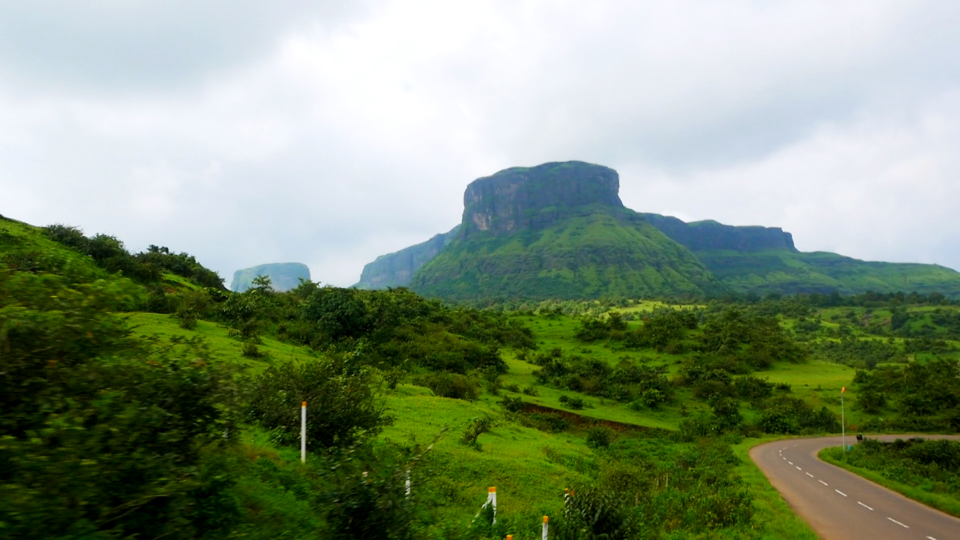
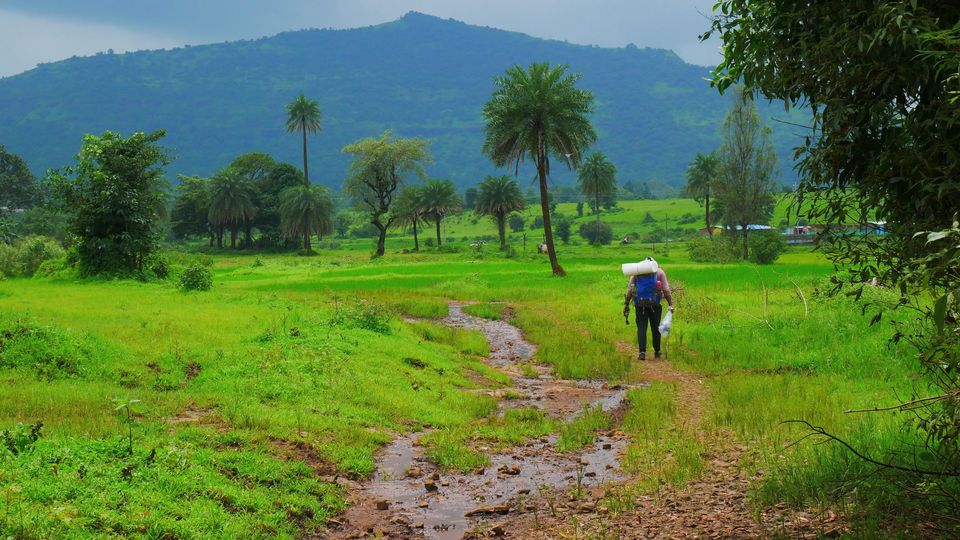
On reaching the village, the path is full of mud and cow-dung. Yesterday it was very difficult for us to walk over here. As the sky is cleared, mud on the road has dried up. Most of these houses here are made of hot bricks. The mud-walled huts could still be seen in these villages. In houses, the roof tiles have been replaced by aluminium sheets. The only plastered building in the village is the newly started school here. The school has re-opened here and classes have started after COVID. Students from these villages don’t have enough facilities for online classes.
We passed the village and reached the main road. From here, we have to get a shared jeep to reach Trimbak, and then to Gotti. We hope we will get a Bus or Jeep from Gotti to Barry Village even if we got late to reach Ghoti. From here we can see the hills where we are coming and the Harihar Fort above it. While going up yesterday, the whole area was covered in thick mist and we couldn’t see the fort from here. It has been an hour we are waiting here for a jeep. Jeeps and sumo are occasionally coming towards the opposite side. And, no vehicles towards Trimbak. Vehicles may be less as it is late afternoon. So we also are trying to get a chance to hitchhike to Trimbak. In the meanwhile, the weather changed suddenly and it started raining. Now the fort has disappeared again in the mist. We are waiting for the next vehicle,enjoying the beautiful hills around this village.
After waiting more than an hour, we got a pickup truck to Trimbak. We hope to reach Barri village before sunset. The views along the way to Trimbak are also scenic. The path is covered with grass on both sides. Occasionally small hills, lakes and villages in their lap. However, the road is in very bad condition. It's a bit of a hassle to capture these stunning views from the truck. When we said we were going to Gotti, the driver told us to get off at the junction 7 KM before Trimbak. All buses from Trimbak to Gotti pass through this junction. So we decided to get down there instead of going to Trimbak town.
After a while, a big mountain appeared in the distance. The view of the mountain came closer and cleared as we got closer to it. Misty clouds are flying below the peak of this mountain. Going a little further, we started seeing another mountain on the right of it. On top of that we can see a big steep rocky pinnacle. This is part of the Navara Navari Fort near Trimbak. The famous Brahmagiri Hills are also close to it. As you approach, parts of the fort rise like a huge wall in front of us.
We have reached the junction where we have to get down. We traveled in this truck to reach here. The view from here is spectacular. We are surrounded by steep hills. The mist has covered the top of the hills. There are huge rock patches on top of these mountains. Seeing these views for a while, we got a bus to Ghoti.
From the bus, we can see the other side of the Navara Navri Fort. The ghat road from Trimbak to Goti passes around this hill. The greenery is still visible wherever you go along this route. Going a little further, we came across parts of the Vaitrana Dam and the nearby Mukhne Reservoir.

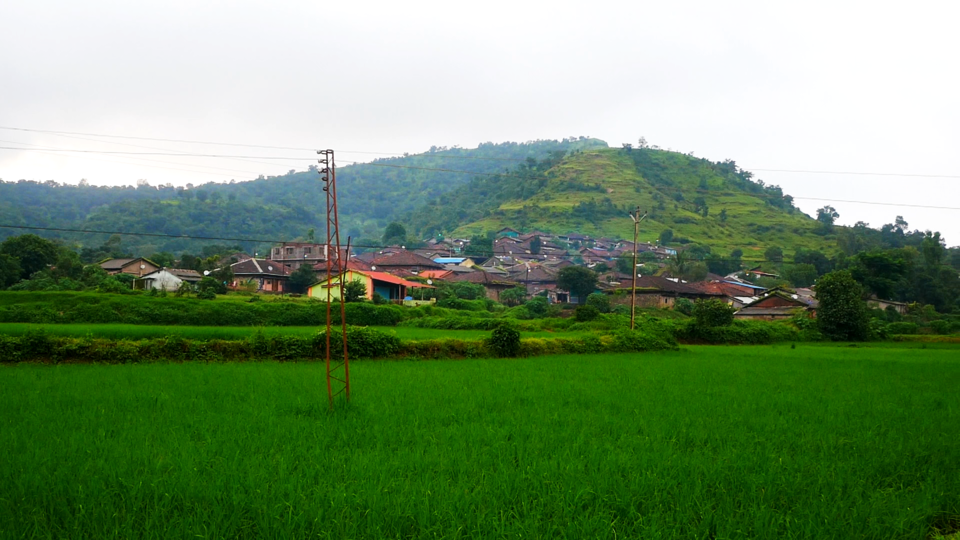
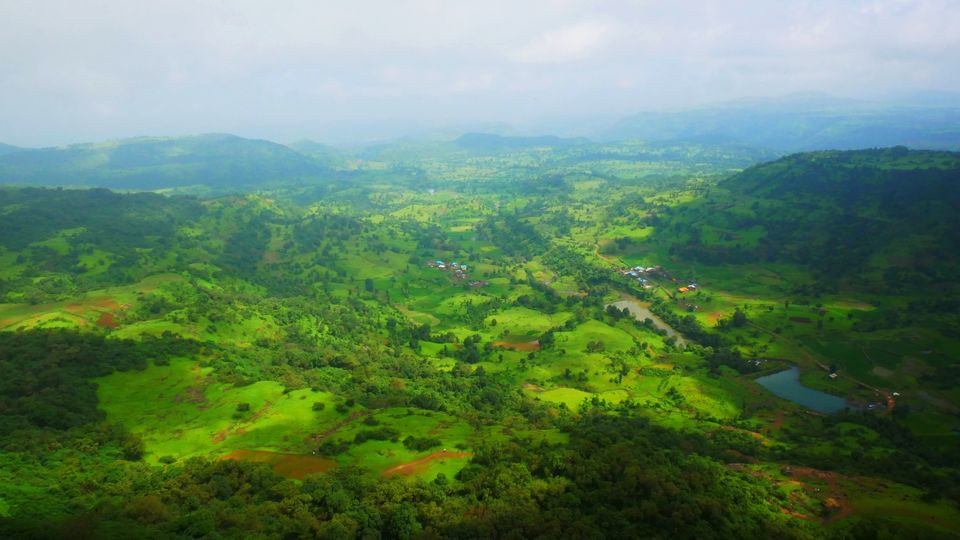
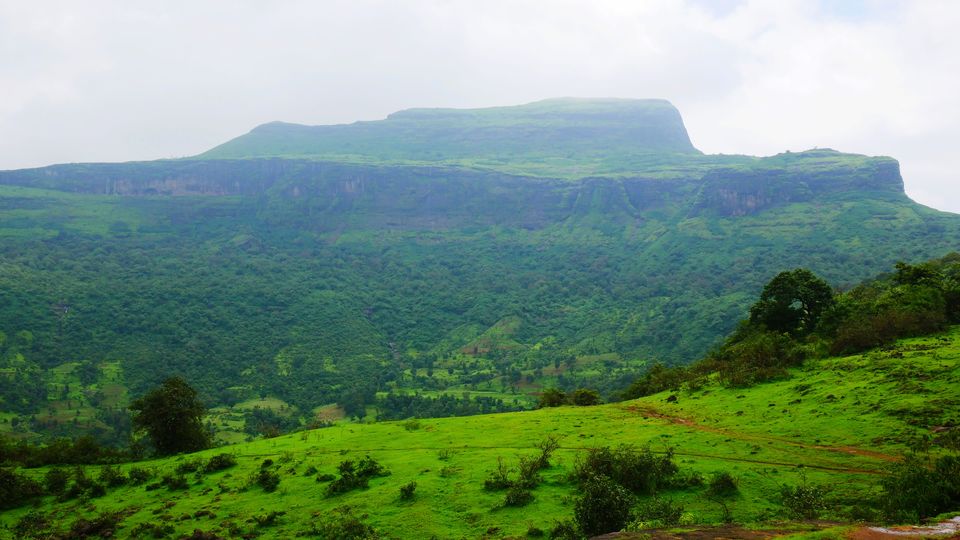

We reached Ghoti town by 3’o clock. After waiting for more than an hour here, we got a shared jeep to Barry Village. Vehicles that go from here to Bandardara and Rajouri pass through Bari village only. After an hour's journey through bumpy roads, we have now reached Barri village. The village is located a short distance from main Road. We bought some eggs for the night from the nearest shop and now we are walking to the village looking for a place to pitch our tent.
We started seeing the houses on the way to the village. A traditional farming village in the lap of Kalsubai. All the houses look the same. Beyond that, Kalsubai hill stands like a mountain. Only half of the hill is visible from here. The rest is hidden in the mist. It was then we noticed a stream flowing on the side of the village. Maybe we can take a bath tonight from there.
Tomorrow, we are going to explore Kalsubai Peak, which is the highest peak in Maharashtra. You can watch the traditional lifestyle of Bari village, stunning views on the way to the Kalsubai peak, and panoramic sceneries from the peak in the next part.
Full video: Youtube / The Indian Trails 2.0

